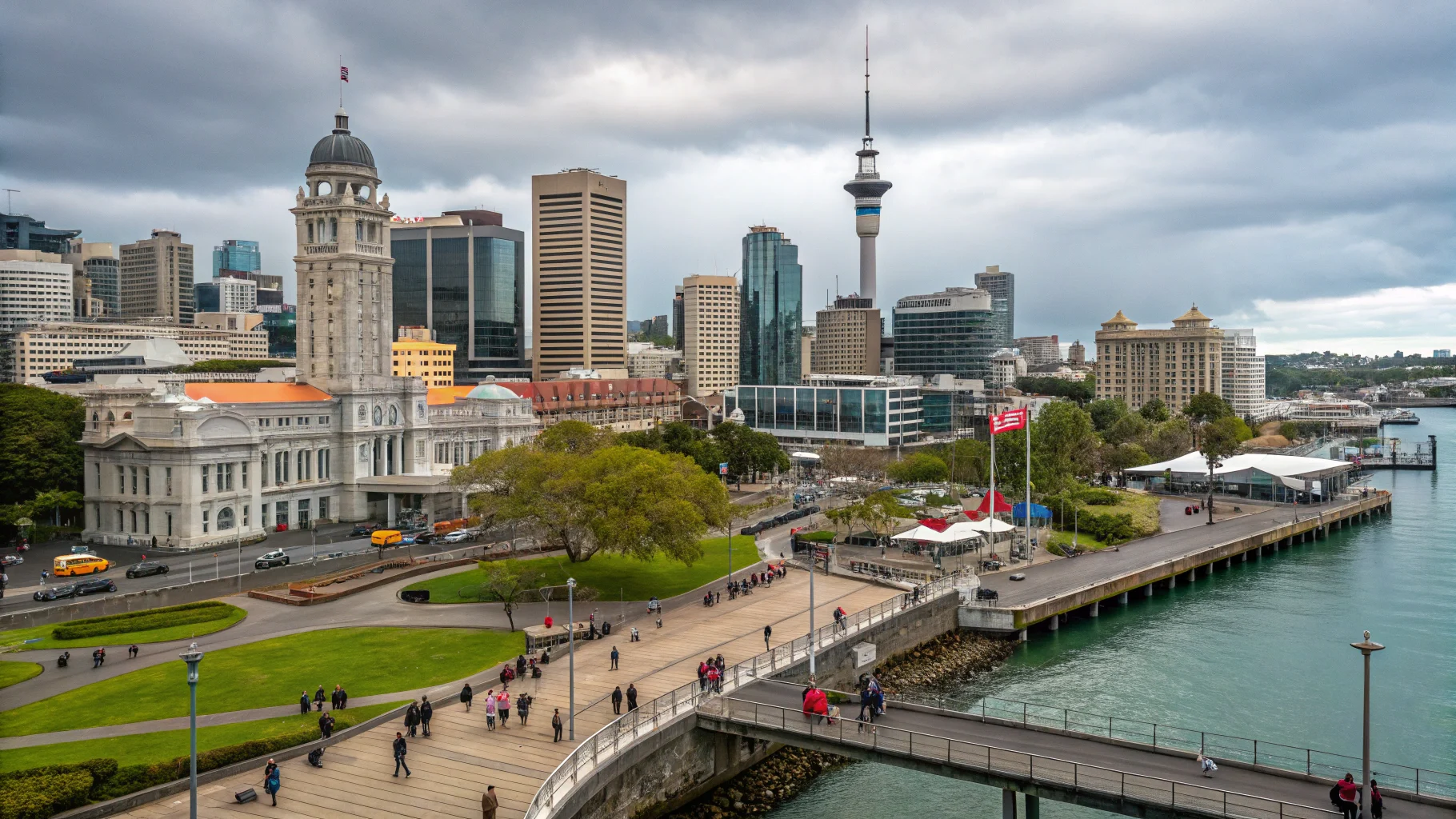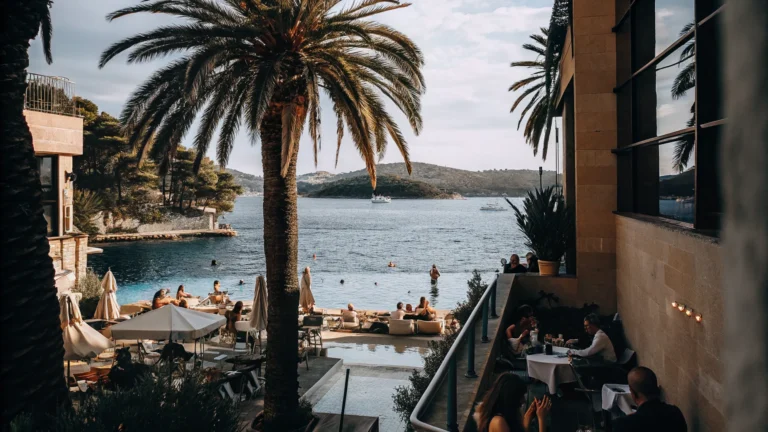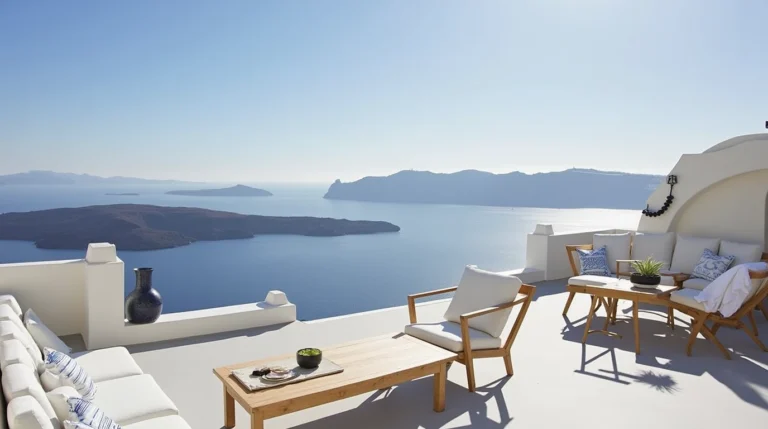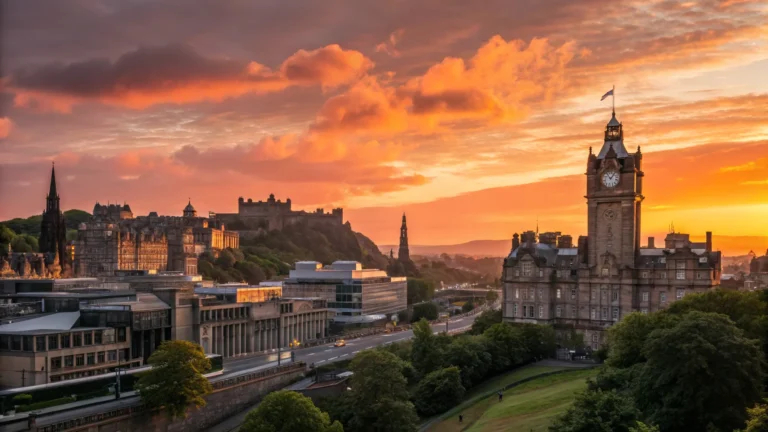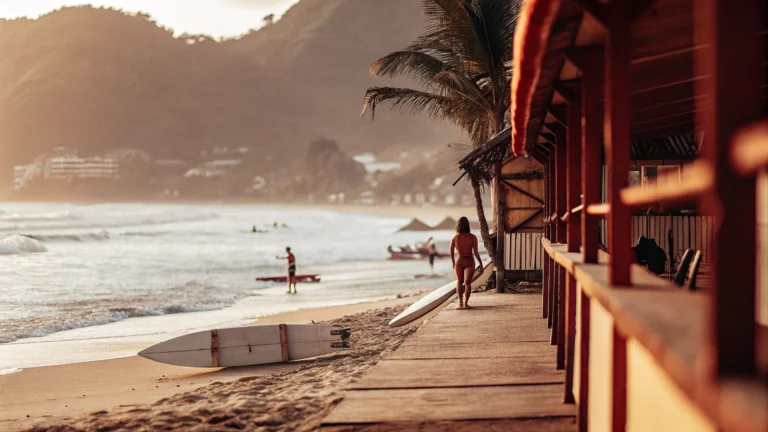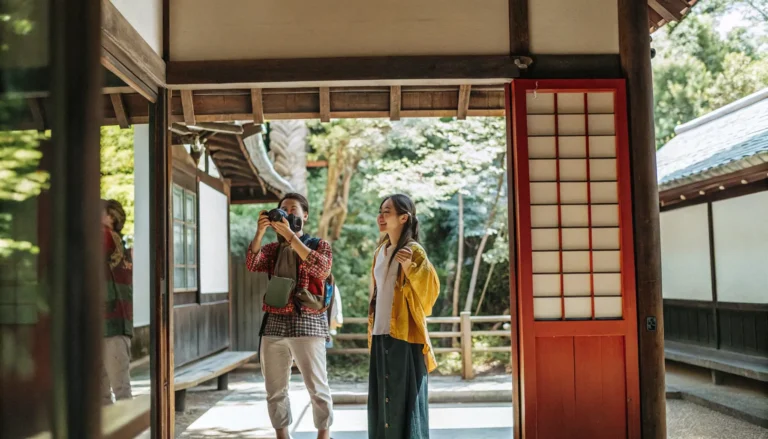Best Time to Go to NZ How to Pick the Right Month
Aotearoa, the Land of the Long White Cloud, beckons travelers with its dramatic landscapes that seem plucked from fantasy films. But when exactly is the best time to go to NZ? The answer isn’t straightforward—it’s as varied as the country’s terrain itself. Whether you’re dreaming of snow-dusted mountains, sun-drenched beaches, or vineyard-covered hills, timing your visit can transform your New Zealand experience.
This comprehensive guide dives deep into the seasonal nuances that make each period unique, helping you align your travel dreams with the perfect moment to experience them. From hidden seasonal gems to practical planning advice, we’ll explore every factor that might influence your decision on the best time to go to NZ for your personal adventure.
Table of Contents
1. Decoding New Zealand’s Travel Seasons
Sitting in the Southern Hemisphere, New Zealand dances to a different seasonal rhythm than North America and Europe. Each season paints the landscape with its own distinctive palette and offers unique opportunities for exploration.
Summer’s Golden Glow (December to February)
When the Northern Hemisphere shivers through winter, New Zealand basks in summer sunshine. This peak season brings temperatures hovering between 20-25°C (68-77°F), creating ideal conditions for coastal adventures and alpine expeditions alike.
Why summer shines:
- Daylight stretches generously into evening (sometimes until 9:30 PM)
- Crystal-clear waters perfect for swimming and marine activities
- Alpine trails free of snow and fully accessible
- Vibrant atmosphere with festivals and outdoor events nationwide
Summer considerations:
- Accommodation prices reach their zenith, especially in hotspots
- Popular tracks like the Tongariro Crossing can become walking highways
- Spontaneity suffers—book well ahead or face disappointment
- Inland regions occasionally swelter under 30°C+ (86°F+) heat waves
Autumn’s Mellow Embrace (March to May)
As summer’s fervor cools, New Zealand transitions into perhaps its most photogenic season. Temperatures gradually retreat to 15-20°C (59-68°F), while deciduous trees—particularly in Central Otago, Hawke’s Bay, and Wanaka—ignite in fiery displays.
Autumn advantages:
- The tourist tide recedes, leaving breathing room at popular sites
- Weather patterns stabilize with less rainfall in many regions
- Vineyards burst with activity during harvest seasons
- Photographers discover magic in the golden light and vibrant foliage
- Value resurfaces in accommodation and activities
Autumn awareness:
- Evenings require layers, especially from late April onward
- Mountain passes may see early snowfall by May
- Ocean temperatures begin their cooling journey
- Some summer-specific activities wind down operations
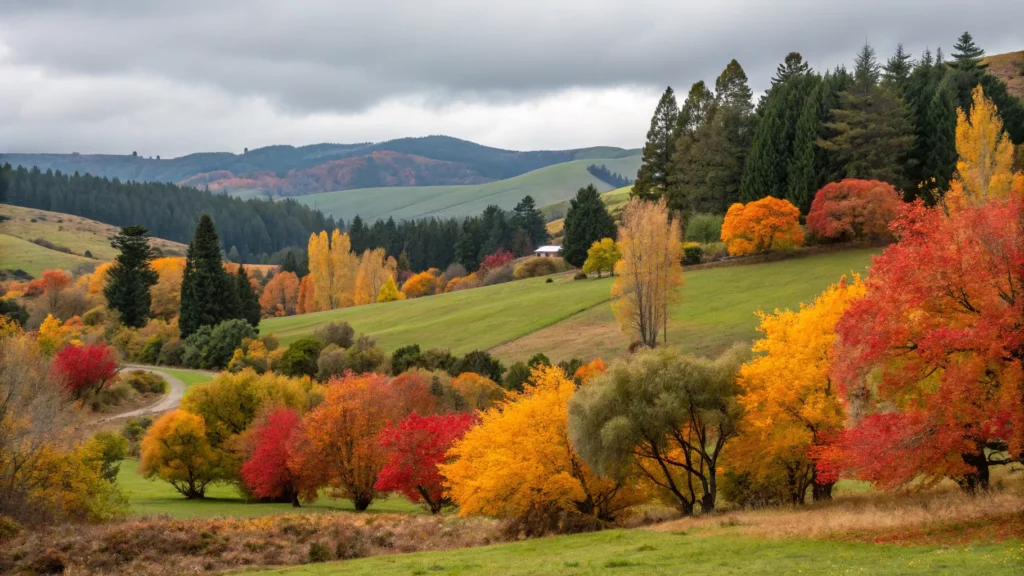

Winter’s Alpine Enchantment (June to August)
Winter transforms New Zealand into a tale of two islands. The North Island generally experiences mild temperatures except in higher elevations, while the South Island embraces the full alpine experience with snow-capped mountains creating postcard-perfect scenes.
Winter wonders:
- World-class skiing and snowboarding across multiple regions
- Crisp, clear days revealing mountains in spectacular definition
- Significantly fewer international tourists at major attractions
- Cozy evenings by crackling fires with world-class Pinot Noir
- Thermal springs offering blissful contrast to the cool air
Winter watchpoints:
- Daylight hours shrink considerably (darkness by 5:30 PM mid-winter)
- Alpine passes occasionally close after heavy snowfalls
- Temperatures in southern regions can drop below freezing
- Some tour operators hibernate or reduce schedules
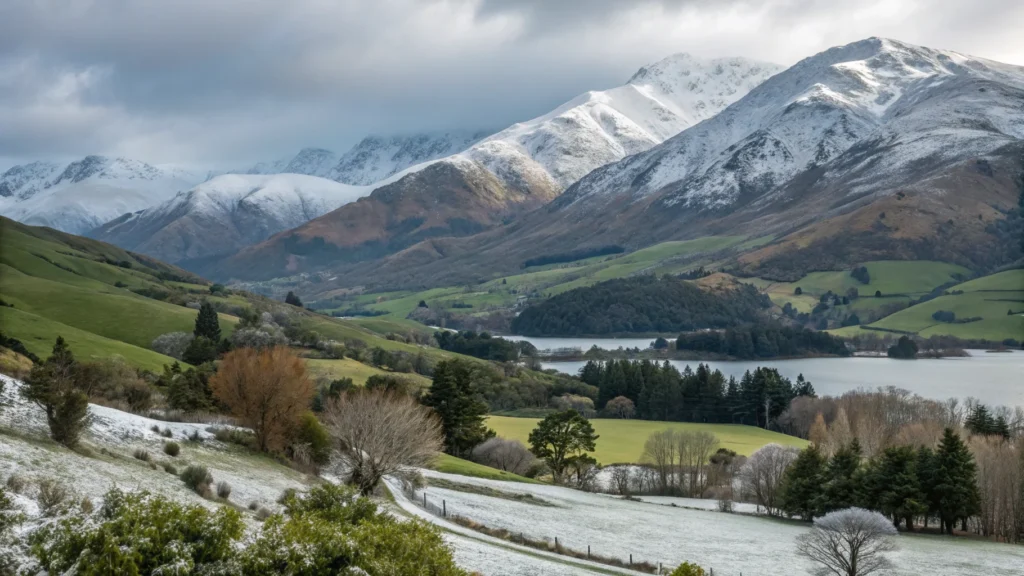

Spring’s Vibrant Revival (September to November)
As winter loosens its grip, New Zealand bursts into bloom. Newborn lambs dot verdant hillsides, orchards explode with blossoms, and temperatures gradually climb from 12°C to 18°C (54-64°F) as the season progresses.
Spring specialties:
- Gardens showcase spectacular displays nationwide
- Waterfalls thunder with impressive force from winter rainfall
- Wildlife activity increases, particularly bird watching opportunities
- Landscapes glow with an almost surreal green intensity
- Shoulder season pricing returns for accommodations
Spring subtleties:
- Weather unpredictability reaches its peak
- Wind can be particularly forceful, especially in October
- Mountain areas may remain snow-affected into November
- Ocean remains too chilly for all but the most determined swimmers
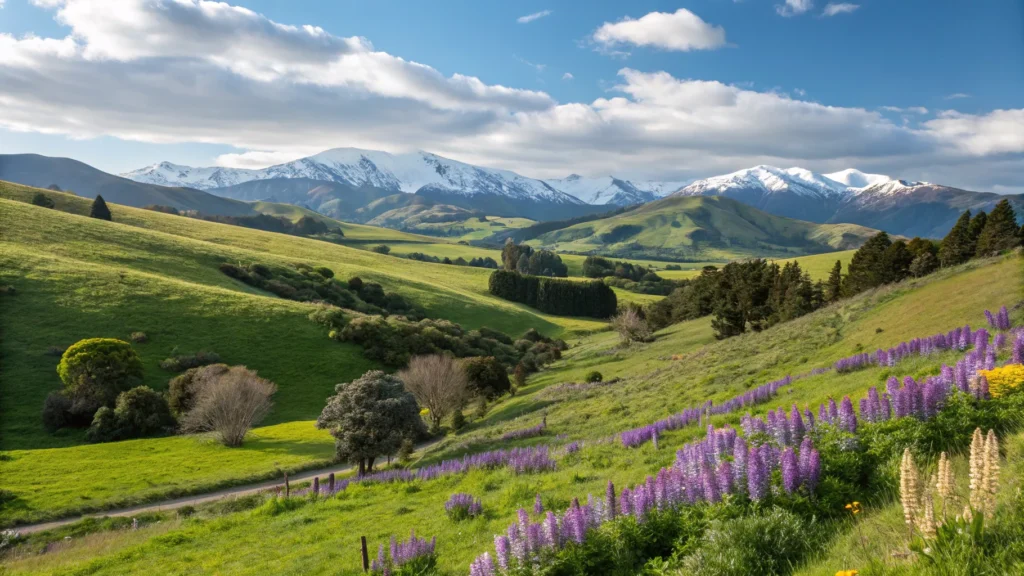

2. Crafting the Perfect Sightseeing Journey
For travelers prioritizing general exploration and landmark-hopping, the shoulder seasons—autumn (March-May) and spring (September-November)—offer the sweet spot for discovering the best time to go to NZ.
These transitional periods deliver multiple advantages:
- Moderate temperatures ideal for extended exploration
- Attractions breathe without summer’s crowded intensity
- Light quality often proves exceptional for photography
- Value emerges in both accommodation and activities
Regional sightseeing considerations:
North Island exploration works wonderfully year-round, with particular magic from December through April when weather stability peaks. The subtropical Far North maintains pleasant temperatures even through winter months, making it an excellent refuge during colder periods.
South Island discovery reaches its accessible prime from October through April. During this window, mountain passes remain reliably open, weather systems typically stabilize, and the full spectrum of landscapes becomes accessible. However, don’t discount winter visits to places like Milford Sound, where rainfall transforms cliff faces into cascading waterfalls of breathtaking beauty.
Photography enthusiasts should note:
- Summer’s extended “golden hours” occur early morning (5:30-7:00 AM) and evening (8:00-9:30 PM)
- Winter’s softer light bathes landscapes around 4:00-5:00 PM
- Crystal-clear winter days deliver exceptional mountain definition
- April’s autumn palette creates magical juxtapositions in vineyard regions
3. Embracing New Zealand’s Coastal Treasures
With over 15,000 kilometers of shoreline—ranging from black volcanic crescents to golden-sand havens—New Zealand’s beaches offer distinctive coastal experiences. Without question, summer (December to February) represents the pinnacle period for beach enthusiasts searching for the best time to go to NZ.
The January peak:
- Ocean temperatures reach their annual height (19-21°C/66-70°F)
- Consistent sunshine with temperatures typically 22-25°C (72-77°F)
- Full lifeguard services at popular swimming locations
- Beach amenities operating at maximum capacity
Regional beach timing guide:
- December-February: Prime time for Coromandel Peninsula, Bay of Plenty, and Abel Tasman
- March: Extended swimming season, particularly north of Auckland
- April-November: Better suited for beachcombing and coastal walks
Temperature insider knowledge: East coast beaches generally maintain warmer water temperatures than west coast beaches at the same latitude. North Island’s eastern shores typically offer more swimming-friendly conditions than South Island counterparts.
Must-experience coastal gems:
- Hot Water Beach (Coromandel): Dig your personal thermal pool within the tidal zone
- Cathedral Cove (Coromandel): Navigate the iconic stone archway between two secluded beaches
- Ninety Mile Beach (Northland): Experience one of the world’s longest uninterrupted beaches
- Piha (Auckland): Witness the raw power of the Tasman Sea against dramatic black sand
- Kaiteriteri (Nelson): Launch your Abel Tasman adventure from this golden-sand paradise
4. Witnessing Marine Giants
Few experiences rival watching a massive whale breach against New Zealand’s dramatic coastal backdrop. While certain species make appearances year-round, understanding seasonal migration patterns reveals the best time to go to NZ for specific whale watching ambitions.
All year long, visitors may see the fascinating resident sperm whales that have made Kaikoura famous worldwide. However, optimal viewing opportunities emerge during:
- Winter months (June-August): When migratory humpback whales, blue whales, and southern right whales join the permanent residents
- Summer period (December-March): When calmer seas enhance viewing comfort and photography conditions
Auckland and Bay of Islands waters host Bryde’s whales and orca pods, with viewing peaks during:
- Autumn months (March-April): When feeding activity intensifies
- Spring period (September-October): When seasonal migrations bring various species closer to shore
Marlborough Sounds offers specialized humpback whale viewing during:
- Early winter (June-July): When these magnificent creatures navigate through Cook Strait
Marine enthusiast tips:
- Morning excursions typically encounter calmer sea conditions
- Maintain flexibility in your itinerary for weather rescheduling
- Pack motion sickness remedies even if you don’t normally need them
- Since these are wild animals rather than entertainers, go into the encounter with reasonable expectations.
5. Riding New Zealand’s Perfect Waves
Surrounded by open ocean receiving swells from multiple directions, New Zealand offers world-class surfing opportunities across diverse breaks. The best time to go to NZ for wave-riding adventures shifts with your experience level and regional focus.
North Island surf calendar:
- Summer (December-February): Gentler, more consistent waves perfect for beginners and intermediates, particularly along eastern coastlines
- Autumn (March-May): Prime surfing window balancing good swells with manageable crowds
- Winter (June-August): Most powerful and challenging wave conditions, requiring advanced skills
- Spring (September-November): Transitional conditions with unpredictable excellence
South Island surf patterns:
- Summer through Autumn: More approachable water temperatures with quality breaks
- Winter: Phenomenal swells for experienced surfers willing to brave the cold
Surf spot difficulty spectrum:
Learning curves:
- Lyall Bay (Wellington): Forgiving beach break with several surf schools
- Mount Maunganui (Bay of Plenty): Long, gentle waves with lifeguard presence
- Orewa (Auckland): Spacious beach break ideal for first-timers
Intermediate challenges:
- Raglan (Waikato): Legendary left-hand point break with multiple sections
- Piha (Auckland): Powerful beach break requiring respect for conditions
- Whangamata (Coromandel): Consistent beach break with occasional point break perfection
Expert territory:
- Shipwreck Bay (Northland): World-class left-hand point break
- Muriwai (Auckland): Powerful beach break with strong rips requiring experience
- Kaikoura (South Island): Reef breaks delivering quality waves in spectacular settings
Always research local conditions, respect the established surf hierarchy, and stay aware of changing tides and currents—particularly at beaches known for strong rips.
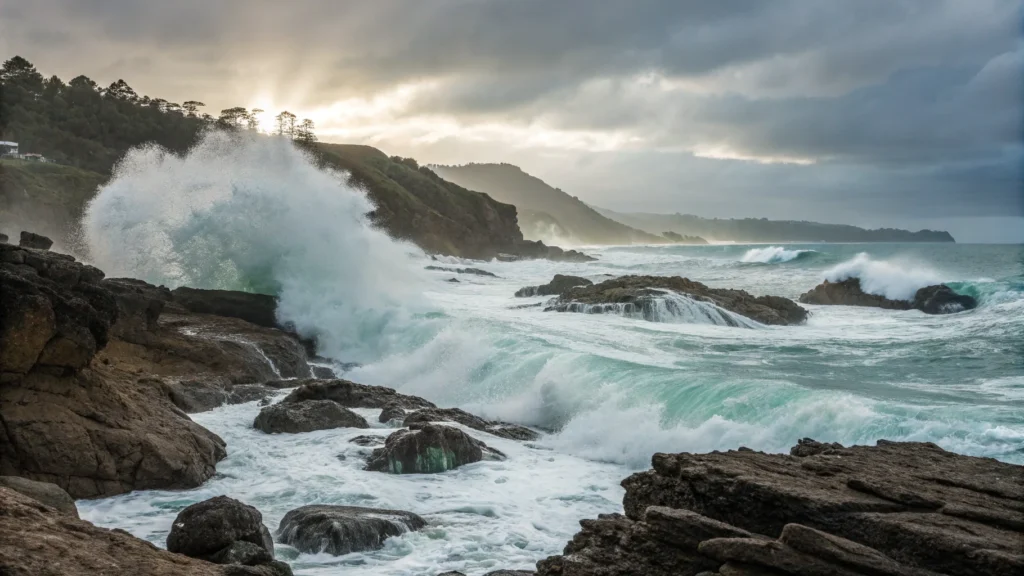

6. Savoring Wine Country Experiences
New Zealand’s viticultural reputation extends far beyond its borders, with wine regions offering immersive experiences ranging from casual tastings to comprehensive tours. The best time to go to NZ for wine experiences depends on whether you prefer witnessing harvest action or enjoying more leisurely exploration.
Harvest energy (February-April):
- Vineyards humming with picking and processing activity
- Opportunities to witness grape transformation firsthand
- Vintners focused primarily on production rather than visitors
- Dynamic atmosphere with seasonal workers and excitement
Post-harvest serenity (May-November):
- Winemakers available for more personalized tasting experiences
- Relaxed pace at cellar doors with room for questions and conversation
- Autumn’s spectacular color transformations (April-May)
- Better availability for behind-the-scenes tours and barrel tastings
Regional wine exploration calendar:
Marlborough (South Island):
- World’s definitive Sauvignon Blanc terroir
- Optimal visiting window: February-May
- Over 150 wineries scattered across stunning landscapes
Hawke’s Bay (North Island):
- Premier region for Bordeaux-style reds and robust Syrah
- Food and wine pairing paradise with exceptional restaurants
- Best experienced: March-June when autumn colors complement the experience
Central Otago (South Island):
- Dramatic mountainous backdrop for world-renowned Pinot Noir
- Most photogenic during autumn color explosion
- Highest altitude vineyards creating distinctive flavor profiles
Waiheke Island (Auckland):
- Boutique producers creating exceptional wines within city reach
- Year-round appeal thanks to maritime climate moderation
- Summer offers perfect combination of beach visits and vineyard exploration
Annual wine celebrations worth planning around:
- Marlborough Wine & Food Festival (February)
- F.A.W.C! Food and Wine Classic in Hawke’s Bay (June/November editions)
- Central Otago Pinot Noir Celebration (January)
- Waiheke Wine Festival (October)
7. Creating Unforgettable Family Memories
Traveling with children introduces unique considerations when determining the best time to go to NZ. While school holidays often dictate timing, understanding seasonal advantages helps maximize your family adventure.
Summer family advantages (December-February):
- Coincides with major school holiday periods worldwide
- Warmth minimizes packing needs and maximizes comfort
- Extended daylight provides more exploration time
- All family-oriented attractions operate at full capacity
- Water-based activities accessible for all ages
Shoulder season family benefits (Spring/Autumn):
- More breathing room at popular attractions
- Comfortable temperatures for active exploration
- Often align with school holiday periods
- Superior value across accommodation and activities
- Fewer reservation disappointments
Winter school holiday possibilities (July):
- Snow experiences create magical memories
- Indoor attraction spaces less congested
- Winter festival activities designed for families
- Unique opportunity for Northern Hemisphere children to experience “Christmas in July”
Seasonal family considerations:
Summer family highlights:
- Swimming opportunities throughout both islands
- Wildlife more active and visible
- U-pick fruit experiences at orchards (cherries, berries)
- Longer operating hours maximizing activity options
Shoulder season family advantages:
- More personalized experiences at attractions
- Easier accommodation arrangements
- Perfect hiking temperatures for young explorers
- Enhanced wildlife viewing with fewer disturbances
Winter family opportunities:
- Snow play and beginner ski lessons
- Thermal attraction appreciation heightened
- Excellent museum and indoor activity options
- Unique wildlife experiences (baby seals in winter months)
Most family-friendly regional bases:
- Rotorua (geothermal wonders and cultural experiences)
- Queenstown (adventure options for every age and courage level)
- Auckland (diverse city attractions and island excursions)
- Wellington (interactive museums and cultural institutions)
- Christchurch (innovative rebuilding projects and expansive parks)
8. Romancing New Zealand’s Landscapes
Couples and honeymooners discover intimate moments throughout New Zealand’s diverse environments. The best time to go to NZ for romance depends entirely on your shared definition of the perfect backdrop for connection.
Summer romance (December-February):
- Endless opportunities for sunset picnics
- Late evening strolls under gentle twilight
- Stargazing in International Dark Sky Reserves
- Secluded swimming holes and beach coves
- Perfect temperatures for outdoor dining experiences
Autumn romance (March-May):
- Wine harvest experiences with shared tastings
- Photographer’s dream with golden landscape light
- Tranquil moments at now-quiet scenic locations
- Evening fireside ambiance as temperatures drop
- Perfect hiking conditions for shared adventures
Winter romance (June-August):
- Snow-dusted landscapes creating fairytale settings
- Steaming hot springs under star-filled skies
- Intimate ski lodge evenings by crackling fireplaces
- Mulled wine and shared blankets after adventure days
- Significantly reduced tourist presence at scenic viewpoints
Spring romance (September-November):
- Gardens bursting with blossoms and fragrance
- Picturesque moments among newborn lambs and wildlife
- Waterfall experiences enhanced by winter melt
- Pleasant temperatures for exploration without crowds
- Trail experiences without summer’s hiking traffic
Most romantic regional backdrops:
Summer romance settings:
- Abel Tasman’s golden beaches and turquoise waters
- Waiheke Island’s vineyard-to-beach transitions
- Coromandel’s hidden coves and dramatic rock formations
Autumn romance landscapes:
- Central Otago’s golden hillsides and still lakes
- Hawke’s Bay’s vineyard rows painted in amber and crimson
- Marlborough’s patchwork of vineyards against mountain backdrops
Winter romance environments:
- Queenstown’s lakeside with snow-capped mountain reflections
- Lake Tekapo’s stargazing opportunities amid alpine serenity
- Rotorua’s steaming geothermal features against crisp air
Spring romance settings:
- Wellington Botanic Garden’s tulip and spring flower displays
- Christchurch’s regenerating garden city in full bloom
- Northland’s coastal paths lined with flowering natives
Luxury accommodation options require considerable advance planning regardless of season, particularly exclusive lodges with limited room inventories that book months ahead.
9. Embracing Spring & Summer Adventures
New Zealand’s warmer half of the year unlocks endless possibilities for outdoor exploration. The best time to go to NZ for spring and summer activities typically spans September through February, with each month offering distinctive experiences.
Hiking windows (September-April):
- Great Walks reservation system opens annually in June
- Peak season (December-February) delivers reliable weather but crowded trails
- March-April provides excellent conditions with diminished crowds
- Alpine routes accessible primarily December-March when snow clearance is complete
Mountain biking prime time (October-April):
- Trails reach optimal condition after spring moisture stabilizes
- Queenstown and Rotorua bike parks operate at full capacity
- Extended daylight allows for longer riding adventures
- North Island trails maintain year-round ridability in many regions
Paddling adventures (November-March):
- Water temperatures comfortable for occasional immersion
- Abel Tasman coastal kayaking showcases crystal-clear waters
- Lakes generally calmer during morning hours
- River levels typically more stable and predictable
Wildlife encounters (seasonal variations):
- Bird watching peaks during spring breeding season (September-November)
- Seal pup colonies visible December-March
- Dolphin interactions available year-round but most comfortable in summer
- Kiwi spotting tours operate through the year with extended summer hours
Adventure activities (December-March):
- Adrenaline experiences operate daily regardless of season
- White water rafting reaches prime conditions after spring melt
- Canyoning opportunities expand with warmer water temperatures
- Multi-day adventure packages operate with maximum options
Photography seasonal specialties:
- Lupins creating purple carpets (November-December around Lake Tekapo)
- Pohutukawa trees flowering with crimson blooms (December along North Island coasts)
- Mirror-like lake reflections during calm autumn mornings (April-May)
- Extended golden hour photography in midsummer (December-January)
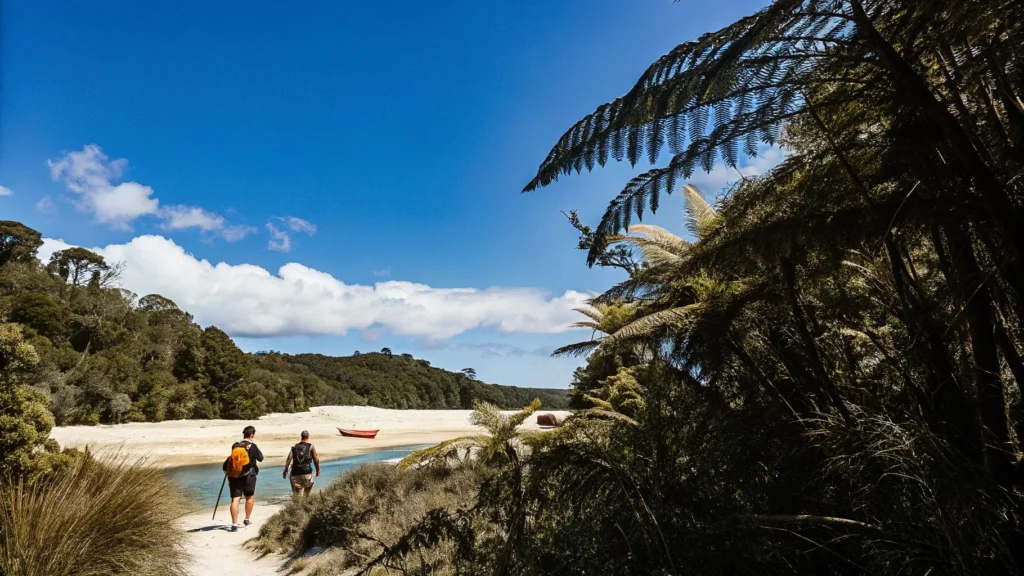

10. Discovering Fall & Winter Treasures
Cooler seasons reveal New Zealand experiences impossible during warmer months. The best time to go to NZ for fall and winter activities spans April through September, with each period offering distinctive opportunities.
Snow sport seasons (June-October):
- July and August deliver the most consistent snow base
- June often surprises with excellent early-season powder days
- September balances decent snow with increasing sunshine hours
- Major ski areas include Coronet Peak, The Remarkables, Cardrona, Mt. Hutt, and Whakapapa
Winter hiking possibilities (June-August):
- Lower elevation trails remain perfectly accessible
- Crystal-clear winter days offer unparalleled mountain visibility
- Popular summer routes become peaceful winter wonderlands
- Alpine landscapes transformed into photographic masterpieces
Thermal experiences (enhanced in winter):
- Rotorua’s geothermal parks showcase more dramatic steam effects
- Hanmer Springs’ thermal pools offer perfect temperature contrast
- Hot Water Beach (Coromandel) delivers more dramatic steam displays
- Alpine hot pools in Queenstown and Tekapo frame snowy backdrops
Seasonal celebration calendar:
- Queenstown Winter Festival (June) launches the ski season
- Matariki celebrations (Māori New Year, June-July) nationwide
- Dunedin Chocolate Carnival (July) offers sweet winter treats
- Wellington On a Plate food festival (August) showcases culinary creativity
Autumn special experiences (April-May):
- Arrowtown’s famous Japanese maple and deciduous displays
- Harvest festivals throughout wine country
- Central Otago’s hillsides transformed into golden panoramas
- Major attractions operating with breathing room after summer
Indoor cultural immersion opportunities:
- Museum collections explored without summer crowds
- Māori cultural performances with more intimate audience sizes
- Gallery exhibitions and studio tours with artist interactions
- Culinary workshops and food experiences with seasonal ingredients
11. Strategic Booking for Your New Zealand Adventure
Finding your personal best time to go to NZ involves balancing preferences with practicalities. Whatever season you choose, strategic advance planning ensures smoother travels and better experiences.
Critical booking timeframes:
- Peak summer (December-February): Secure plans 6-9 months ahead
- Great Walks reservations: Book immediately when the system opens (typically June)
- Winter ski accommodations: Finalize 3-4 months before arrival
- Shoulder season travels: Book 2-3 months ahead for optimal choice
Transportation planning wisdom:
- Domestic flights offer best pricing 2-3 months before travel
- Vehicle rentals (especially campervans) frequently sell out during peak periods
- Inter-island ferry bookings essential during holiday weeks
- Airport transfers in smaller destinations require advance arrangement
Accommodation strategies:
- Peak season accommodations require 4-6 month advance bookings
- Consider holiday homes (“baches”) for authentic local experiences
- Remote destinations have extremely limited lodging requiring early commitment
- Luxury lodges often book 12+ months in advance, particularly in summer
Experience reservation guidelines:
- Wildlife encounters have strictly limited capacities requiring early booking
- Weather-dependent activities benefit from early-trip scheduling allowing rebooking
- Multi-day guided experiences typically require substantial deposits
- Specialized tours (photography, wine, cultural) operate limited departures
When determining your ideal window for experiencing New Zealand, weigh:
- Your priority activities and their optimal seasons
- Your weather flexibility and tolerance for variability
- Your budget constraints (shoulder seasons deliver superior value)
- Your preference for lively environments or peaceful exploration
Regardless of when you choose to experience Aotearoa, the land offers transformative experiences in every season. From summer’s vibrant energy to winter’s contemplative beauty, from autumn’s golden transitions to spring’s hopeful awakening—each period reveals different facets of these remarkable islands.
By aligning your journey with your personal priorities and preferences, you’ll discover your own perfect window into the breathtaking landscapes, warm hospitality, and unforgettable adventures that make New Zealand a destination that changes travelers forever. The true best time to go to NZ is whenever you can immerse yourself fully in its wonders with open eyes and an adventurous spirit.

